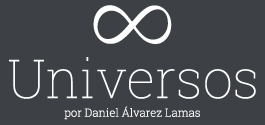Taking CDF into the lower left and right wilber quadrants in work with groups 1/3
It seems just to say that the immediately most evident use of CDF falls into what Wilber would call the “upper left quadrant” where a client’s intention is in focus. From a developmental perspective, this domain of discourse is that of listening to the client as asking “what should I do and for whom” as well as of “what can I know and do, and what are my options”. The most straightforward application of CDF thus would seem to concern fields such as coaching, psychotherapy, mediation, one-to-one consulting, and self development, in which intentional behavior is paramount. However, the basic ideas and insights of CDF extend to fields resident in Wilber’s “lower left quadrant” (LL), where corporate, community, and global social issues reside, if not also in his “lower right quadrant” (LR) where social and organizational systems are in focus.
In my volume 2, which is centered on the requisite structure of organizations, I have approached LL and LR in terms of assessment, namely, a “capability metric”. By such a metric I referred to a way of sampling the developmental profiles of collaborators at the upper echelon of an organization, especially board members and the executive team, but conceivably also middle management. From a social-emotional perspective, in my volume 1, I designed a team typology by which teams are characterized either as “equilibrated”, and “upwardly” and “downwardly” divided in terms of meaning making. By upwardly divided teams I meant teams in which the majority of team members reside at higher social-emotional levels, and a minority at lower levels, and vice versa for downwardly divided teams. In my view, this team characteristic is subsumed by the notion of a capability metric.
At this point, for me these older ideas are in close connection with what I envision to be an updated IDM Curriculum reorganized to focus on work with groups. So far, our curriculum has been focused on Wilber’s UL and UR, and this more and more begins to feel like an undue restriction, if not suffocation, of the potential of CDF. It seems to me that the bridge to a more comprehensive curriculum is DTF, the dialectical thought form framework. In DTF, there is no pre-ordained focuse on one or the other Wilber quadrant; it is a strictly quadrant-neutral framework for developing curriculum and social theory.
The great advance of DTF over existing integral methodologies lies in the embedding of dialectical thought forms in Bhaskar’s four Moments of Dialectic, first outlined in his 1993 book on Dialectical Critical Realism (DCR). This embedding and operationalization of moments of dialectic is unique to DTF, and indirectly carries over into the social-emotional domain since all thought form classes are embedded in the UL quadrant, as shown in picture.
In terms of the depiction of the internal workspace, above, all social-emotional and psychological issues residing in the UL can be investigated and practically dealt with in terms of the four thought form classes (C>P>R>T), acknowledged as being at the same time ontological categories structuring the real world.
Concretely, this means, for instance, that one can do “cognitive coaching” in a social-emotional context, by integrating Kegan-prompts with Basseches/Laske thought forms, as shown in the transcribed coaching session below. This is so since CDF uses Bhaskar’s four Moments of Dialectic (MELD) as criteria for determining the level of cognitive development of adults in terms of their use of thought forms in a 1-hr structured interview.
For example, a social-emotional prompt such as “success” — in which the central theme is overcoming internal and external obstacles — can be used in a coaching, hosting, or socio-drama session in terms of all four moments of dialectic since “overcoming obstacles” can be articulated contextually, in a process-focused way, focused on obstacles as grounding relationships to oneself and others and, finally, as a topic of self-transformation by way of transcendence of internalized Others. In this way arises a linkage between social-emotional and cognitive prompts leading to truly integrative and “integral” interventions.
Example:
Coach: It seems that the success you are speaking about is rooted in overcoming a narrower notion of yourself that has hindered you from envisioning a breakthrough in your performance …
Coachee: That is how I feel, too. I used to see success only as an outcome, especially viewed in light of what others would think about it.
Coach: So you made “success” a topic relative to internalized others and moreover saw it as something static, like a thing.
Coachee: Exactly. But I have now learned through my sessions with you that success has to do with overcoming internal obstacles, and also has several dialectical dimensions, so that if I view it in terms of all of them, I can no longer separate the process of achieving success from its outcome.
Coach: Can you say a little more about that using dialectical deep thinking:
Coachee: It seems to me that I can now see myself as related to a common ground shared by my colleagues through which I am defined, in my performance, as inseparable from them, rather than an outsider to them working in isolation, or even against them.
Coach: Right. And how would you now characterize the feeling you have about yourself as a professional as you discipline your performance further as part of this common ground?
Coachee: I would say that I perceive overcoming internal obstacles in myself as being an integral piece of moving forward the culture in which we do our work here; as a consequence, I feel like a moment of the larger process by which this culture evolves through me and others alike.
Coach: Well, it seems you really got your CDF down now!





